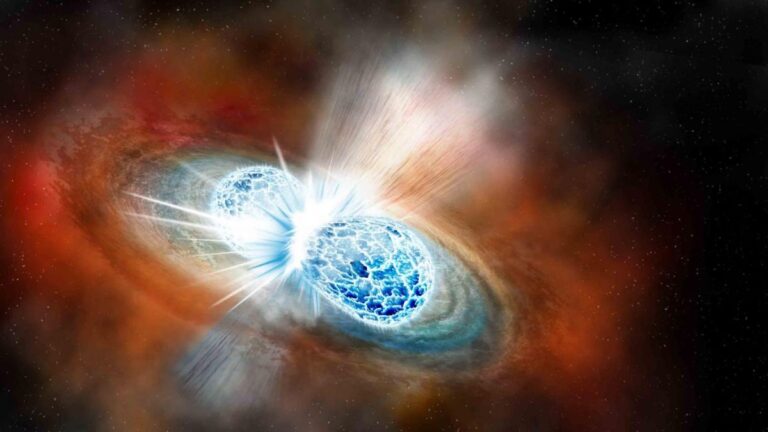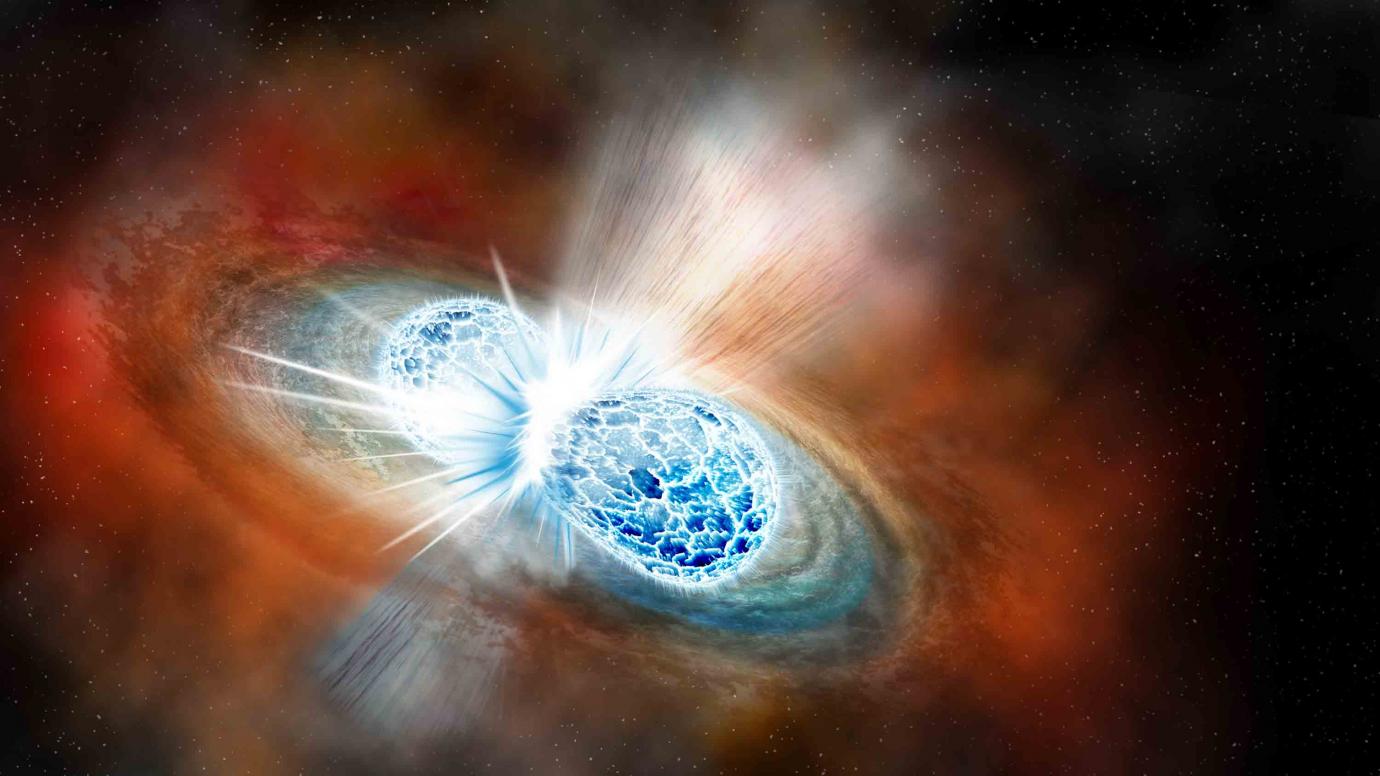
[ad_1]

Using the James Webb Space Telescope (JWST), astronomers have traced an incredibly bright gamma-ray burst (GRB) back to its source, a violent collision between two neutron stars.
The ring on your finger likely contains atoms forged in neutron star collisions like this, also known as “kilonovas.” That’s because, as well as blasting out long-duration GRBs, kilonovas are believed to be the sites at which the universe’s heaviest elements, which cannot be synthesized in the nuclear furnaces at the heart of stars, are forged.
These elements are theorized to be created by a mechanism called “neutron capture” or the r-process, which allows atomic nuclei to capture neutrons, creating new and heavier elements, including gold, platinum and uranium. The r-process can only proceed in extreme and violent conditions, such as those found around colliding neutron stars.
Related: Surprise! Colliding neutron stars create perfectly spherical ‘kilonova’ explosions
This is the first time JWST has been used to detect emissions from such an event, and the powerful space telescope was also able to detect the signature of heavy elements being forged in the explosive event. In particular, the team saw evidence of the heavy element tellurium and the creation of lanthanides — a group of 15 metals heavier than lead.
“These observations demonstrate that nucleosynthesis in GRBs can create r-process elements across a broad atomic mass range and play a central role in heavy element nucleosynthesis across the universe,” the team wrote in a paper detailing their findings.
The GRB followed to its kilonova source by the team — led by Andrew Levan, a professor at Radboud University in the Netherlands — is also extraordinary in its own right. Designated GRB 230307A, it was initially detected by NASA’s Fermi Gamma-ray Space Telescope on March 7, 2023, and is the second-brightest GRB ever seen.
The GRB lasted around 34 seconds and was spotted by multiple other telescopes, which is what allowed it to be triangulated back to its source by astronomers. Team member Brian Metzger, of Columbia University, discussed the achievement in a series of tweets on Thursday (July 6).
“In work led by Andrew Levan, we detected kilonova emission (for the first time!) with JWST, after a GRB,” Metzger wrote. “In perhaps the biggest plot twist: the GRB — the second brightest of all time — lasted half a minute, i.e. a second ‘long’ burst accompanied by r-process production. Likely a neutron star merger, but one which challenges our ideas about how long the central engine should ‘jet.'”
JWST observed the kilonova twice, first at 29 days after the GRB and then again at 61 days after the blast of radiation, with the rapid fade in brightness and the transition from blue to red between these observations hinting at its kilonova nature.
The team identified several bright galaxies in the vicinity of the kilonova that may be the home of this neutron star collision and, thus, the source of GRB 230307A. The one they favor is the brightest of these galaxies, which is around 8.3 million light-years away from Earth and is offset from the GRB source by around 130,000 light-years.
The kilonova could also have been spotted in another type of emission other than light. The collision of neutron stars causes the very fabric of space-time to “ring” in the form of gravitational waves. These ripples can be detected here on Earth by detectors like the Laser Interferometer Gravitational-Wave Observatory — but LIGO wasn’t active when GRB 230307A lit up. The facility was in the midst of a three-year shutdown at that time, receiving upgrades to make it more sensitive, only coming back online in May 2023.
It is early days for the team’s discovery, which is currently undergoing peer review prior to publication in a journal. An initial version of the paper, which may be subject to revision, is published on the research repository arXiv.
[ad_2]